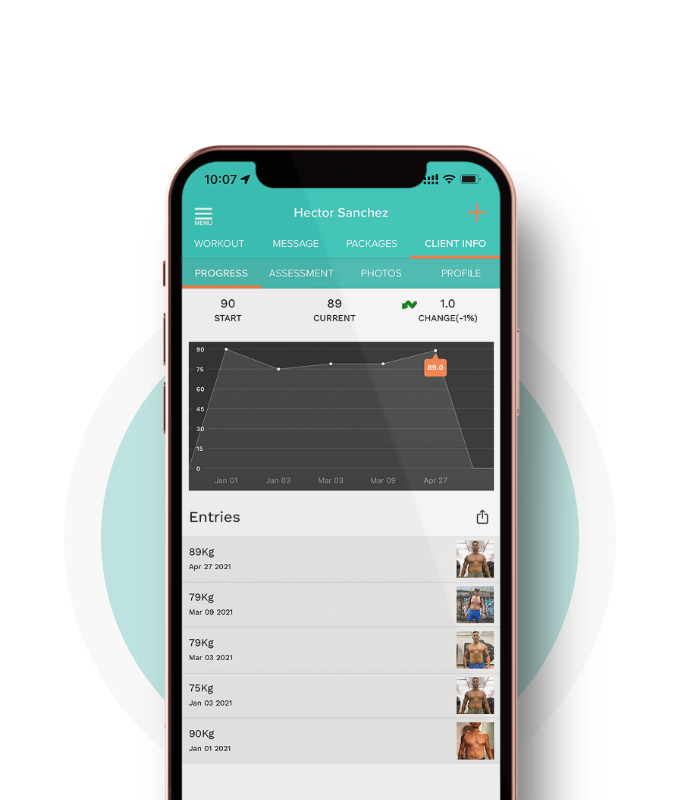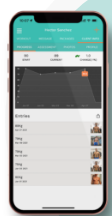Build Your Online Presence: A Comprehensive Guide to Starting a Fitness Blog
Starting a fitness blog can be a rewarding and fulfilling experience. It allows you to share your passion for health and wellness with a wider audience, while also potentially earning some income through advertising, sponsorships, and other opportunities.
However, starting a successful blog requires careful planning, dedication, and a willingness to learn and adapt. In this ultimate guide, we will cover all the essential steps you need to take to start a fitness blog and turn it into a thriving online destination.
Step 1: Define Your Niche and Target Audience
Before you start a fitness blog, it’s important to first define your niche and target audience. Your niche is the specific area of focus for your blog, such as weight loss, strength training, or yoga.
Defining your niche will help you create more targeted and relevant content for your audience, and it will also make it easier for you to reach out to potential advertisers and sponsors who are interested in your specific topic.
To determine your niche, consider your own interests and expertise in the fitness world. What are you most passionate about? What do you have the most knowledge and experience in? These are good starting points for defining your niche.
Once you have a clear idea of your niche, you can then start to think about your target audience. Who are the people you want to reach with your blog? Are you targeting beginners, experienced fitness enthusiasts, or something in between? Understanding your audience will help you create content that resonates with them and meets their needs.
Step 2: Choose a Blogging Platform and Domain Name
There are many different blogging platforms to choose from, each with their own pros and cons. Some of the most popular options include WordPress, Blogger, and Squarespace.
WordPress is a highly customizable platform that offers a wide range of themes and plugins, making it a popular choice for many bloggers. It also has a large community of users, so you can easily find support and resources if you need help. However, it does require a bit more technical knowledge to set up and manage, and you will need to host your own blog if you want to use a custom domain name. You can find more information about WordPress and how to get started on their website: https://wordpress.org/
Blogger is a free platform owned by Google that is easy to use and set up. It’s a good choice for beginners who want a simple, hassle-free blogging experience. However, it has fewer customization options compared to WordPress, and it’s not as widely used, so you may have a harder time finding support and resources. You can find more information about Blogger and how to create a blog on their website: https://www.blogger.com/
Squarespace is a paid platform that offers a wide range of customizable templates and easy-to-use drag-and-drop design tools. It’s a good choice for bloggers who want a sleek and professional-looking blog without the need for technical knowledge. However, it can be more expensive than other platforms, and it may not have as many features and options as WordPress. You can find more information about Squarespace and how to create a website on their website: https://www.squarespace.com/
Once you have chosen a blogging platform, you will need to choose a domain name for your blog. Your domain name is the web address that people will use to access your blog, so it’s important to choose something catchy, memorable, and relevant to your niche.
To choose a domain name, think about your target audience and what they might be searching for. You should also try to make it as short and easy to remember.
Step 3: Set Up Your Blog
Once you have chosen your blogging platform and domain name, it’s time to set up your blog. This process will vary depending on the platform you’re using, but most platforms have easy-to-follow instructions and tutorials to help you get started.
Some things you will need to do to set up your blog include:
-
Choosing a theme or design for your blog. This will determine the overall look and feel of your blog, so it’s important to choose something that reflects your brand and appeals to your target audience.
-
Setting up pages and menus. Most blogs have a homepage, an about page, and a contact page, as well as a menu that allows readers to easily navigate to different sections of the blog.
-
Adding social media links. Make it easy for readers to connect with you on social media by adding links to your profiles on platforms like Facebook, Twitter, and Instagram.
-
Installing necessary plugins. Depending on the platform you’re using, you may need to install certain plugins to add features and functionality to your blog. For example, you may want to install a plugin for SEO, social media sharing, or email opt-ins.
Step 4: Create Quality Content
Once your blog is set up, it’s time to start creating content. Quality content is crucial for attracting and retaining readers, as well as for building your credibility and authority in your niche.
Here are some tips for creating high-quality content:
-
Write in a clear, concise, and engaging style. Use headings, bullet points, and other formatting techniques to make your content easy to read and scan.
-
Use images and videos to break up long blocks of text and add visual interest. Just make sure to use properly licensed images and videos, or create your own.
-
Proofread and edit your content to ensure it’s free of spelling and grammar errors.
-
Share your own experiences, insights, and expertise, but also be willing to research and include information from credible sources.
-
Update your blog regularly to keep your readers coming back for more. Aim for at least one new post per week, but more often is even better.
Step 5: Promote Your Blog
Once you have some content on your blog, it’s time to start promoting it to reach a wider audience. There are many different ways to promote your blog, including:
-
Sharing your content on social media. Use platforms like Facebook, Twitter, and Instagram to share your blog posts and engage with your followers.
-
Participating in relevant online communities and forums. Look for communities and forums related to your niche and join in the conversation by sharing your blog and offering helpful advice and insights.
-
Guest posting on other blogs. Look for blogs related to your niche that accept guest posts and pitch them a topic that would be relevant and useful to their readers.
-
Building an email list. Use an email marketing service like Mailchimp to collect email addresses from your readers and send them updates about your new blog posts.
-
Collaborating with other bloggers or influencers. Reach out to other bloggers or influencers in your niche and see if you can work together on a project or promotion.
Step 6: Monetize Your Blog
If you’re interested in making money from your blog, there are several ways you can monetize it. Some options include:
- Advertising. You can sell ad space on your blog to companies or individuals who are interested in promoting their products or services to your targeted audience.
- Sponsored content. You can work with companies to create sponsored content, where you promote their products or services in exchange for payment. Just make sure to disclose any sponsored content to your readers.
- Affiliate marketing. You can earn a commission by promoting products or services from other companies on your blog. When one of your readers clicks on a link and makes a purchase, you earn a percentage of the sale.
- Selling your own products or services. If you have a product or service related to your niche, you can sell it on your blog. This could be an e-book, a physical product, or a service like coaching or consulting.
- Donations. If you have a loyal and engaged audience, you can ask for donations to support your blog. This can be done through a platform like Patreon or through a simple donate button on your blog.
-
Conclusion
Starting a fitness blog takes time, effort, and dedication, but it can be a rewarding and fulfilling experience. By following these steps and continually learning and adapting, you can turn your blog into a successful and thriving online destination.
Remember to define your niche and target audience, choose a blogging platform and domain name, set up your blog, create quality content, promote your blog, and monetize it if you want to. With hard work and persistence, you can build a successful fitness blog that makes a difference in the lives of your readers.
The Training Notebook Founder
Hector Sanchez




